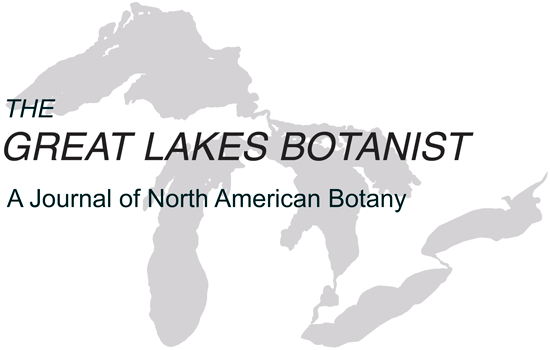Welby R. Smith. 2023. Ferns and Lycophytes of Minnesota: The Complete Guide to Species Identification. Photography by Richard W. Haug. University of Minnesota Press, Minneapolis. xxiv + 321 pp., paperback. ISBN 9781-5179-1466-0. $39.95.
This is a worthy successor to three previous guidebooks by Welby Smith on various groups of vascular plants of Minnesota: trees and shrubs (Smith 2008), native orchids (Smith 2012), and sedges and rushes (Smith 2018), the two most recent of which were reviewed in the pages of this journal (Reznicek 2016; Marcum 2019).
As the author notes in the Introduction, this book is not meant to be a monograph, an encyclopedia, or an exhaustive treatise. Rather, it is meant to answer the simple question: “Which plant is that?” To that end, the treatment of each species is kept brief and presented on two facing pages and follows the same format throughout. The left page of each species treatment contains the scientific name and a common name of the species at the top followed by three sections of text: a description of the species, notes on identification, and notes on the natural history of the species. At the upper right of the page is a distribution map showing the outline of the counties of Minnesota and a black dot indicating the location of each specimen in the herbaria examined by the author, primarily the herbarium of the University of Minnesota. The map is also color-shaded indicating the distribution of each of the four major vegetation zones in Minnesota: (i) the eastern broadleaf forest province which occupies the southeastern portion of the state and extending in a narrow band through the central portion of the state; (ii) the Laurentian mixed forest province, which occupies northeastern and north central Minnesota; (iii) the tallgrass aspen parklands province, which constitutes a small area in northwestern Minnesota; and (iv) the prairie parkland province along the western border of the state, broader in the south, but narrowing to the north. A description of each of these zones is provided in the Introduction.
The facing page of each species treatment contains two to five photographs of the species. The photographs, all apparently in situ, are at once uniformly excellent and beautiful. They are expertly chosen to show the habitat and general habit of the species as well as particular characteristics that are useful for identification. The principal photographer, Richard Haug, is due a tremendous amount of credit for adding materially to the usefulness of this volume (a small number of photographs are by others, as indicated by the photographer’s name beside the photo).
After a brief Introduction, the main part of the book is divided into the eight orders into which the Minnesota taxa fall: Lycopodiales (clubmosses, firmosses, and ground-cedars), Isoetales (quillworts), Selaginellales (spikemosses), Equisitales (horsetails and scouring rushes), Ophioglossales (adders’-tongue ferns), Osmundales (royal ferns), Salviniales (water ferns), and Polypodiales (“true ferns”), prefaced by a key to the orders. The treatment of each order begins with one or more pages including a discussion of the taxonomy, description, and natural history of the order, a key to Minnesota genera in that order (if more than one), and a facing page with photos on a white background of all or representative genera or other characteristics. In turn, each genus begins with a page or more of discussion, a key to species (if more than one), and a facing page with outline habit photos of each species. All in all, this provides abundant means to help the user identify the Minnesota species. Families are not prominently shown, although the discussion of each genus mentions the family to which it belongs, or, if an order contains only one family, this is mentioned in the discussion of the order.
Three genera that include numerous species in Minnesota are Equisetum (nine species and one hybrid in Minnesota), Botrychium (14 species), and Dryopteris (eight species), which means that this volume will be of particular value to those trying to identify these species in the broader Midwestern region. This is especially true for Botrychium, for which this volume may be the only readily available source for the identification of many of the recently described species in this now greatly enlarged genus. As noted in the Acknowedgements, the treatment of this genus follows closely the work of the late Warren H. Wagner, Jr., Donald Farrar, and Rosemary and Malcolm MacFarlane.
The book concludes with a useful glossary, bibliography, and index.
Literature Cited
Marcum, P. B. (2019). Book review: Sedges and rushes of Minnesota by Welby R. Smith. The Great Lakes Botanist 58: 117–118.
Reznicek, A. A. (2016). Book review: Native orchids of Minnesota by Welby R. Smith. The Michigan Botanist 55: 67–68.
Smith, W. R. (2008). Trees and shrubs of Minnesota: The complete guide to species identification. University of Minnesota Press, Minneapolis.
Smith, W. R. (2012). Native orchids of Minnesota. University of Minnesota Press, Minneapolis.
Smith, W. R. (2018). Sedges and rushes of Minnesota: The complete guide to species identification. University of Minnesota Press, Minneapolis.
